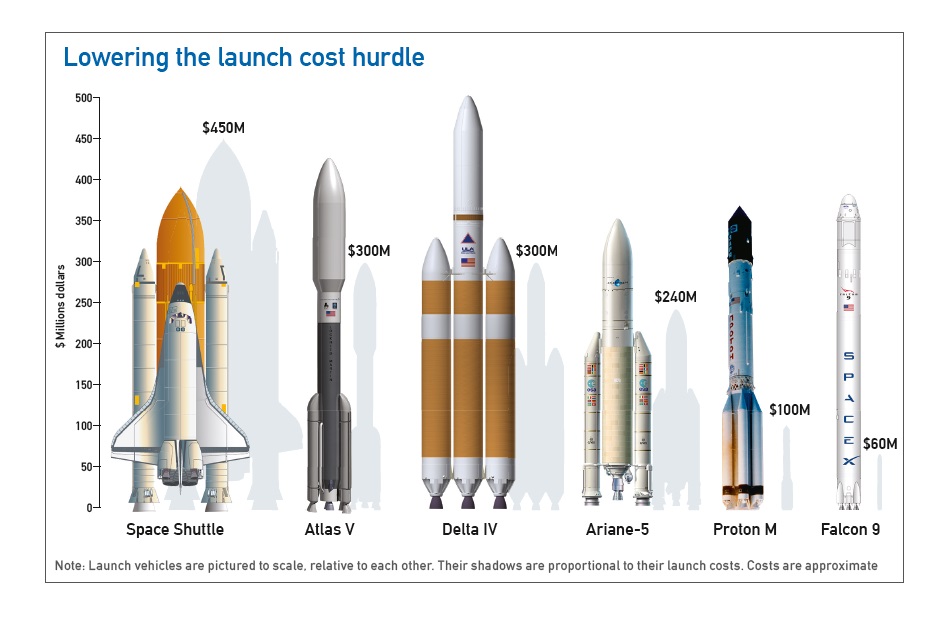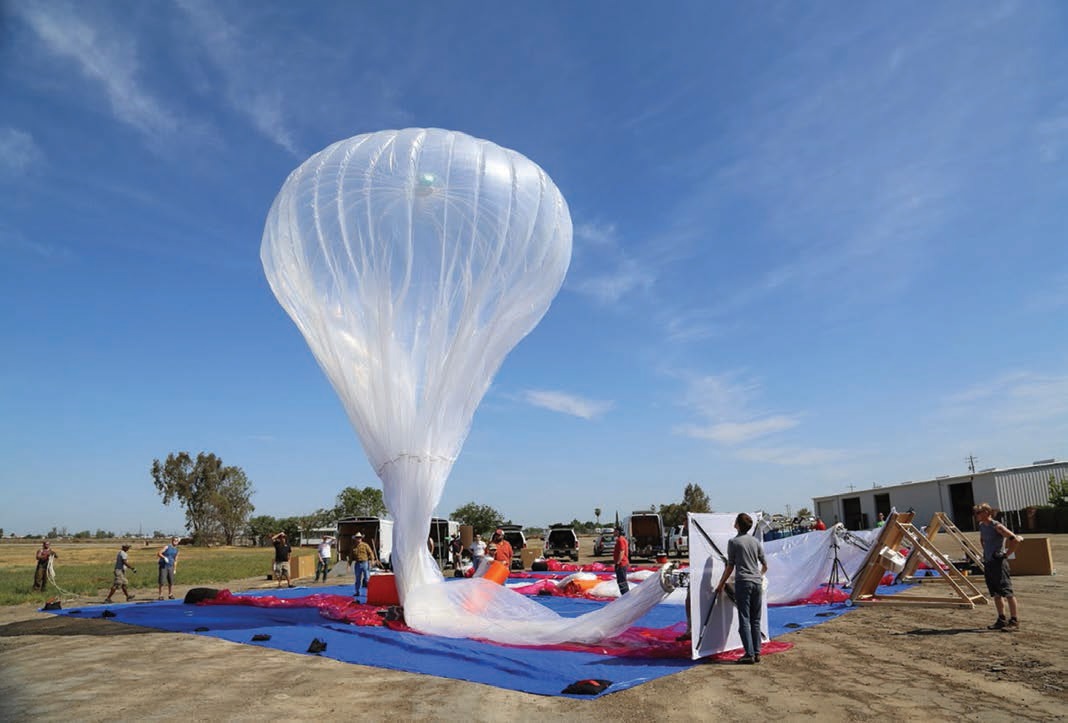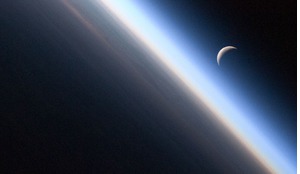Space 1.0: how it all began
In the 1950s and 1960s, the model for the development of global space exploration was the ‘specialisation’ model. In the Soviet space programme, the most obvious example of specialisation was the General Designers’ Board, in which each participant was responsible for their own main direction.
Specialisation continued at each level. If a technical problem arose, it was usually solved by the creation of a new organisation. This led to the development of thousands of innovative decisions in just 10 to 15 years, starting from zero in 1945. These developments were in the most varied technological and scientific directions, leading to the creation of rockets, satellites, rocket engines and manned spacecraft. This explosion of innovation saw an incredible growth in space activity and programmes in the USSR and the USA: ‘Space version 1.0’.
Specialisation in space research also had a multi-faceted socio-economic effect. Whole new high-tech sectors of the economy were created from scratch, as were new scientific directions and institutes. Technical education and education in the natural sciences received a qualitative boost. The high production and technological demands required by the space programmes gradually spread out through the whole economy. The effect on foreign policy and internal politics was huge. This was not just a space race but an ideological contest between two superpowers for world leadership.
This led to huge amounts being spent on every phase of space rocket production, starting with the draft design and up to the implementation of space operations. All of the cost was borne by the two states – the USA and the USSR. Industries that had spent the previous decades engaged in military production greatly appreciated this new task, as it guaranteed government orders. So why did this change after 20 years? And why did human space flight become the key aspect of the space race?
Following the Second World War, mankind as a species was faced by two global challenges: the threat of total annihilation of the human race in a nuclear Third World War and the threat of the ‘destruction of the human spirit’ as a result of the psychological trauma brought on by the Second World War: 50 million people dead, and hundreds of millions of people having been put through terrible suffering.
The space race held the potential answer to both of these challenges. The USSR and the USA each created their own nuclear missile shield, and it was this which to a large extent removed the threat of nuclear war. And the realisation of such projects as the first man in space and the first man on the Moon, which had historic significance for all mankind, were able once again to restore people’s faith in mankind’s dignity. But once these two challenges had been met, the innovative technological explosion linked to mankind’s conquest of space was over. The question arose: can we repeat the breakthrough in space?
Such projects as the first man in space… were able once again to restore people’s faith in mankind’s dignity
Since the mid-1980s, attempts were made to reduce the enormous cost of space launches. This was one of the main aims of the Space Shuttle program: multiple use of a number of expensive elements of both the rockets and the spacecraft for frequent launches. But the Space Shuttle program failed to achieve this; the cost of the launch and the relative cost of the transportation of the payload actually grew: the operational costs of one shuttle launch cost the US around $450 million.1
A Russian poster from 1961, “Glory to the First Cosmonaut, Yuri Gagarin!”
In the 1980s and 1990s it was assumed that it would be possible to reduce costs in the space sector in the same ways as in other industries: implement economies of scale; apply vertical integration in order to create a value chain for the customer; and create a synergy of the market, process and technology. Following this line of thinking, by early 2000 most of the US space sector had been consolidated into the two corporations Lockheed Martin 2 and Boeing. 3 Similarly, in Europe, their competitor EADS (now Airbus Group) 4 was created. All three companies have the following characteristics:
- sales fi gures are around $50-60bn per year (economies of scale);
- they deal in aviation (both military and civilian) and various aspects of military and space production (the synergy effect);
- space production in corporate sales accounts for around 10 per cent (the lowering of corporate risk);
- included in the production of space rockets and satellites are launch services (vertical integration).

However, all space sector companies are large, with little competition. So there is little motivation for innovation – neither technical or managerial – resulting in high production costs. Thus, the declared goal of business optimisation is not achieved.
For example, the cost of launching the new rockets produced by Lockheed Martin (the Atlas V) and Boeing (the Delta IV, admittedly, technically perfect rockets) was more than $300m – more than three times what it cost to launch the rival rocket, the Russian Proton-M. So the American rockets became uncompetitive on the global launch market.
The situation is no better with EADS, and its technically perfect rocket, Ariane-5. The market cost of the launch of one satellite is more than $120m (and, as a rule, two are launched at the same time); but it is an open secret that every commercial launch of Ariane-5 is subsidised from the budget of the European Space Agency.
Evolve or die!
All space sector companies are large, with little competition. So there is little motivation for innovation – technical or managerial – resulting in high production costs
In some areas, space-based systems have lost out to aero or terrestrial services, largely because of the high cost of space-based systems, the need for massive investment in each project, and the inability to repair or modernise the spacecraft when it is in orbit.
For example, there are four operating systems for personal satellite communications: Iridium, GlobalStar, Thuraya and Orbcomm. This equals 140 satellites in orbit at an investment cost of $15bn. There are about one million subscribers globally to these four systems.5 By comparison, land-based mobile systems today have around seven billion subscribers: a ratio of 1:7000.
It is also worth mentioning Google’s Project Loon, and Facebook with its project Internet.org. Project Loon relies on a flotilla of high-altitude balloons; the alliance led by Facebook is using a flotilla of high-flying unmanned aerial vehicles. Each of the projects is, in effect, an airborne communications router and each uses solar energy, which means they can stay in the air for many years.
Another threat to space-based technology is remote monitoring using unmanned aerial vehicles, which have already been used for military programmes and will be available for observation missions. Observation technology using balloons is also expected to become available in the next one or two years. They are simpler, cheaper, more reliable, can be easily repaired and modernised, and tailored to suit the needs of the consumer, depending on the location, the time and permits.
In three to five years, it is likely that the question of the market position of satellite navigation will be under scrutiny.
Space 2.0: Private space research or attempt #2
In the 21st century new, small, private commercial companies have appeared on the space market. These new players are having a profound impact on the market as they have started producing spacecraft using the following innovative ideas:
- everything that I can do myself, I will do. This radically reduced the size of the teams needed in space research and was a major factor in bringing down the cost of production. It also made much simpler and more reliable the crucial question of management;
- wherever possible they rejected specialised decisions for space;
- they built entirely new space infrastructure using all the latest technologies – they did not simply re-design what already existed.
 As cost becomes the greatest driver, some space-based systems are losing out to aero or land-based solutions. Google’s innovative Project Loon began with a pilot test in June 2013, when 30 balloons were launched from New Zealand’s South Island and beamed the internet to a small group of pilot testers
As cost becomes the greatest driver, some space-based systems are losing out to aero or land-based solutions. Google’s innovative Project Loon began with a pilot test in June 2013, when 30 balloons were launched from New Zealand’s South Island and beamed the internet to a small group of pilot testers
And it worked: the cost of launching the Falcon 9 rocket by the young SpaceX company was almost five times lower than for the Delta IV and Atlas V. And the British company SSTL, which started out as a university laboratory producing micro-satellites, became a genuine competitor for the ‘great five’ world leaders in satellite construction: Boeing, Lockheed Martin, EADS Astrium, Loral Space and Thales. SSTL was entrusted with the production of the modules for the loads for the satellites of the European navigation system Galileo.
But this doesn’t solve all the problems of Space 1.0, because the main customer remains the state. And the small companies could still be swallowed up by the bigger companies, because even though the state may want to use the small companies, the big companies will have to be sustained by the state as they supply the military sector.
New hope: Space 3.0
A SpaceX Falcon 9 launches in January 2014, carrying the Thaicom 6 television satellite. New entrants such as SpaceX have massively reduced the costs of accessing space
Commercial business still has no interest in space technology because it sees no possibilities in modern space research for market development, and therefore nowhere where it is worth investing.
At the same time, just as 60 years ago, mankind is facing global and man-made challenges; physical and social threats to Homo sapiens as a species:
- degradation of the environment (ecology);
- natural resources running out (not just oil and gas, but across the whole table of the elements);
- an ever increasing tendency on the part of certain individuals to try to destroy mankind;
- over-consumption in society, which many experts consider a key factor in the continuing global economic crisis.
What’s the way out for mankind? Could space exploration once again play on the idea that it can ‘save mankind’, as it did half a century ago? What kind of new Great Space Project would be suitable here? Mining useful minerals in space? The development of cosmic science? Protection against asteroids? Colonising the Moon or Mars? Perhaps the search for alien civilisations? This author believes that only ‘the road to Mars’ provides the answer to all four global challenges.
But unlike in the days of the first Moon flights, where the goal was to send a man to the Moon and bring him back alive, the ‘Mars Project’ should be to land a man on Mars so that he can live there. Bringing back those who go to colonise Mars can be left until later; possibly this would become possible only for the descendants of the first colonisers of Mars. This idea is being put forward by Elon Musk, the founder of SpaceX and the guru of the Space 2.0 era.
Space research can once again be a leader of innovation only on the basis of a new visionary project. The most promising of these is establishing a colony on Mars
The idea has certain advantages. The project can be realised in just 10-15 years. The vehicle can be much lighter, as there will be no need to provide for a return flight to Earth. The project has a goal that will be seen by the generation that develops it. This creates strong personal motivation.
Furthermore, in order to create a settlement on Mars, new technologies will be required, such as: energy and resource conservation; full recycling of all waste (the colony’s capabilities will be very limited); minimal effect on the environment (the ecology of the settlement); robotics (there will be a lot to do, but a shortage of human hands to do it); and bio-technology and gene-technology (people will be living in an environment which is not only unusual but decidedly aggressive for Homo sapiens). These technologies will need to be effective and reliable. They do not yet exist, but have to be created, and that will require innovation in a whole variety of sectors and scientific disciplines.
Unlike space rocket technology, all of the technologies listed above have huge commercial potential on Earth. An example of this is that Elon Musk founded not only the SpaceX company, but also the Tesla company, which has introduced an innovative electric car to the market. Even though the Tesla company entered the automobile market just two years ago, it already has a capitalisation of over $20bn.
In conclusion, global space research is in a very deep systemic crisis. In order to emerge from this crisis, in the first place it is essential to identify and acknowledge its causes. The fundamental shortcoming of space research in Space 1.0, which was laid down in the USSR and the USA in the 1950s, and later followed by other countries with an interest in space, was the enormous cost of the final product. This was unavoidable, since it was a direct result of the Space 1.0 model of space production: specialisation.
Specialisation allowed for the problem of creating in a very short period of time a nuclear missile shield and the start of a wide range of space programmes, especially manned programmes. The main customer for the production of the Space 1.0 phase was and remains the state – there is a shortage of private investment.
The business optimisation of space production, which was carried out in the USA and the EU in the 1990s, and in China in the first decade of the 21st century, could not and did not lead to a fall in the cost of space production, and in many cases saw the costs rise as a result of less competition at the national level.
The two decades from 1990 illustrated that space lost out time and again to landbased and air-based alternatives. The poor competitiveness of space solutions in the information markets for communications and remote probing of the Earth highlight this: the space option is expensive and can be neither repaired nor modified. The main challenge facing global space research is how, once again, to become the leader in innovation.
At the beginning of the 21st century, Space 2.0 appeared. It was marked out by a different production model: instead of ‘specialisation’ it had ‘natural economy’, ‘non-unique solutions’ and ‘modern technologies of production’. This did allow for a significant reduction in the cost of space technology. But the main shortcoming of Space 2.0 was that it protected the role of the state as the main initiator, beneficiary and investor in space programmes and projects.
Space research can once again be a leader of innovation only on the basis of a new visionary project. The most promising of these is establishing a colony on Mars. This is the only programme which has an enormous potential for Earth. This is of interest to business. This is the new era of development for space research. This is Space 3.0
1 www.nasa.gov/centers/kennedy/about/information/shuttle_faq.html#10
2 www.lockheedmartin.com/us/100years.html
3 www.boeing.com/boeing/history/index.page?
4 www.airbus-group.com/airbusgroup/int/en/our-company/our-heritage.html
5 www.comnews.ru/node/75472














